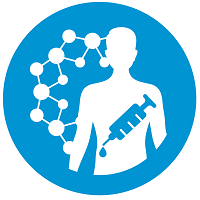Preclinical, Clinical, and Translational Sciences
Symposium: Translational Development of Diverse Drug Formulations
In-Vitro Tools to Streamline Subcutaneous Drug Development
Wednesday, November 12, 2025
10:00 AM - 10:30 AM CT
Location: 225 AB

Mikhail Murashov, PhD (he/him/his)
Assoc Prin. Scientist
Merck & Co., Inc.
Rahway, New Jersey
Speaker(s)
Understanding the in vitro – in vivo correlation (IVIVC) /relationship (IVIVR) for subcutaneous (SC) drug delivery remains a major challenge in drug development. Unlike oral drugs, where established frameworks and regulatory guidance support predictive modeling, SC drugs face additional complexities such as immune reactions, tissue retention, and stability issues—particularly for biologics. Currently, researchers rely on benchtop in vitro testing, current USP methods tailored for oral delivery and mathematical models to estimate in vivo behavior, but many of these approaches have significant limitations. What critical factors are being overlooked, and how can we improve our predictive capabilities?
In this lecture, we will explore the current methodologies used to generate the in vitro data for subcutaneous drugs and what methods are being used to translate in vitro data to in vivo outcomes for SC drugs, assessing their advantages and limitations. Experts from across the field are encouraged to participate to discuss key gaps in existing models and propose considerations for future assessments, including novel in vitro approaches, enhanced mathematical modeling, and better consideration of physiological factors. All attendees are encouraged to participate in the discussion at the end, sharing experiences and ideas to collectively shape the future of IVIVC/IVIVR for SC drug development.
In this lecture, we will explore the current methodologies used to generate the in vitro data for subcutaneous drugs and what methods are being used to translate in vitro data to in vivo outcomes for SC drugs, assessing their advantages and limitations. Experts from across the field are encouraged to participate to discuss key gaps in existing models and propose considerations for future assessments, including novel in vitro approaches, enhanced mathematical modeling, and better consideration of physiological factors. All attendees are encouraged to participate in the discussion at the end, sharing experiences and ideas to collectively shape the future of IVIVC/IVIVR for SC drug development.
Learning Objectives:
- Upon completion, participant will be able to assess IVIVR possibilities provided by state-of-the-art in vitro tools when making subcutaneous drugs.
- Upon completion, participant will be able to determine how in vitro tools can provide insight into formulation behaviour and bioperformance.
- Upon completion, participant will be able to plan and understand in vitro functional assays for subcutaneous drug development.

